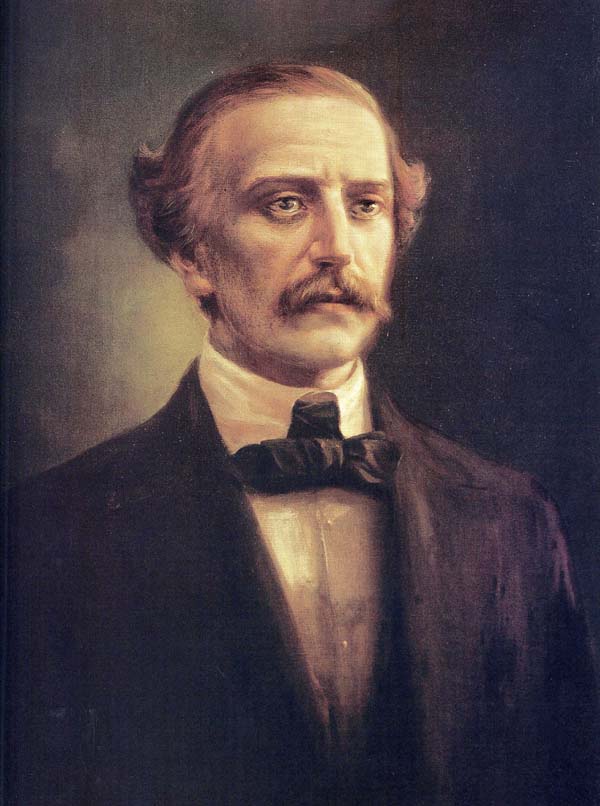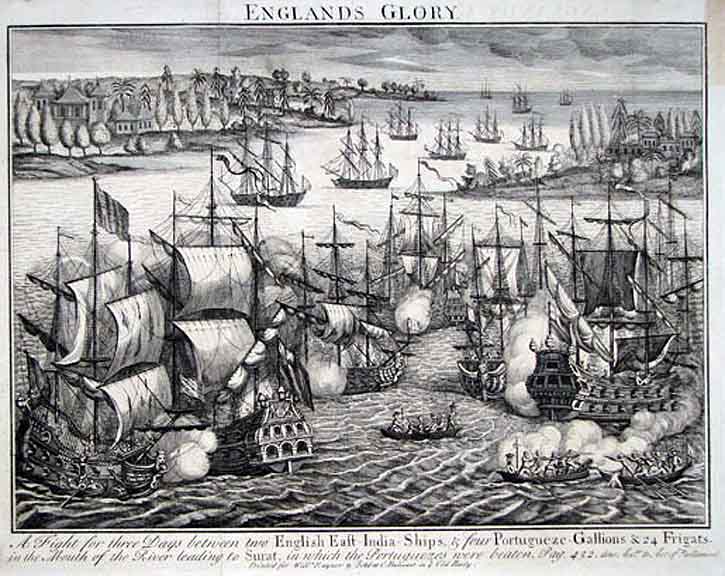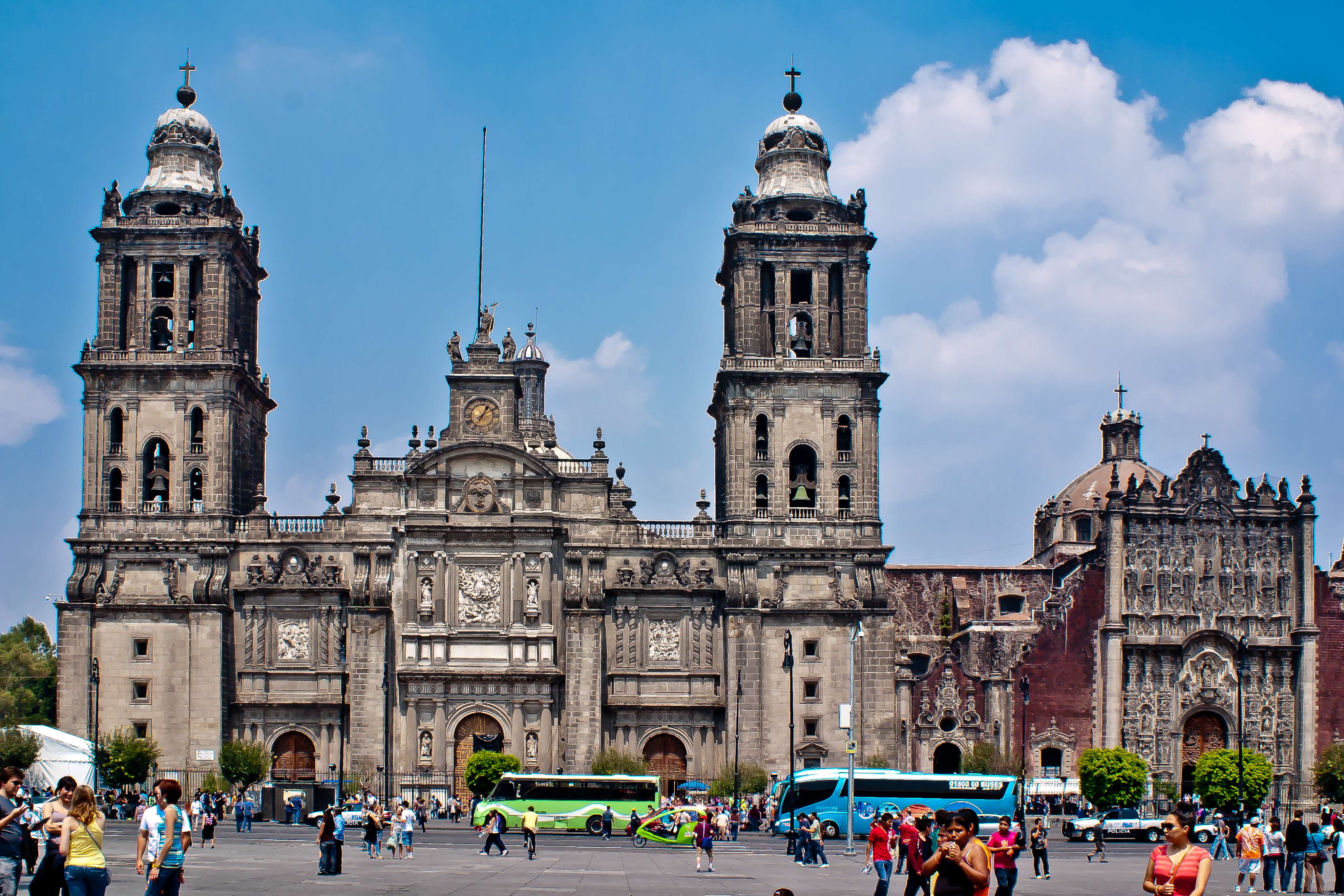|
García Guerra
Fray García Guerra (''also Francisco García Guerra''), OP (c. 1547 in Frómista, Palencia, Spain – February 22, 1612 in Mexico City), archbishop of Mexico and viceroy of New Spain. He held the former office from December 3, 1607, and the latter from June 19, 1611. He still occupied both offices at the time of his death in 1612. Biography He became a Dominican in the Spanish monastery of San Pablo de Valladolid, where he served as prior and principal of the province. In 1607 Philip III of Spain, Philip III named him archbishop of Mexico. In 1611 a letter was received in Mexico City from Spain ordering the sitting viceroy, Luis de Velasco, marqués de Salinas to return to Spain to take charge of the Council of the Indies, and directed García Guerra to fill the position of viceroy until the appointment of another. The letter stipulated that Velasco was to remain in charge of the viceregal government until his actual departure from the colony. Velasco left the city on June 1 ... [...More Info...] [...Related Items...] OR: [Wikipedia] [Google] [Baidu] |
Catholic Church
The Catholic Church (), also known as the Roman Catholic Church, is the List of Christian denominations by number of members, largest Christian church, with 1.27 to 1.41 billion baptized Catholics Catholic Church by country, worldwide as of 2025. It is among the world's oldest and largest international institutions and has played a prominent role in the history and development of Western civilization.Gerald O'Collins, O'Collins, p. v (preface). The church consists of 24 Catholic particular churches and liturgical rites#Churches, ''sui iuris'' (autonomous) churches, including the Latin Church and 23 Eastern Catholic Churches, which comprise almost 3,500 dioceses and Eparchy, eparchies List of Catholic dioceses (structured view), around the world, each overseen by one or more Bishops in the Catholic Church, bishops. The pope, who is the bishop of Rome, is the Papal supremacy, chief pastor of the church. The core beliefs of Catholicism are found in the Nicene Creed. The ... [...More Info...] [...Related Items...] OR: [Wikipedia] [Google] [Baidu] |
Alonso De Peralta
Alonso de Peralta (died 1614) was a Roman Catholic prelate who served as Archbishop of La Plata o Charcas (1609–1614). ''(in Latin)''"Archbishop Alonso de Peralta" ''''. David M. Cheney. Retrieved 2 January 2020. Biography On 14 Jan 1609, Alonso de Peralta was appointed during the papacy of as Archbishop of La Plata o Charcas.[...More Info...] [...Related Items...] OR: [Wikipedia] [Google] [Baidu] |
17th-century Roman Catholic Archbishops In Mexico
The 17th century lasted from January 1, 1601 (represented by the Roman numerals MDCI), to December 31, 1700 (MDCC). It falls into the early modern period of Europe and in that continent (whose impact on the world was increasing) was characterized by the Baroque cultural movement, the latter part of the Spanish Golden Age, the Dutch Golden Age, the French ''Grand Siècle'' dominated by Louis XIV, the Scientific Revolution, the world's first public company and megacorporation known as the Dutch East India Company, and according to some historians, the General Crisis. From the mid-17th century, European politics were increasingly dominated by the Kingdom of France of Louis XIV, where royal power was solidified domestically in the civil war of the Fronde. The semi-feudal territorial French nobility was weakened and subjugated to the power of an absolute monarchy through the reinvention of the Palace of Versailles from a hunting lodge to a gilded prison, in which a greatly expanded r ... [...More Info...] [...Related Items...] OR: [Wikipedia] [Google] [Baidu] |
Roman Catholic Archbishops Of Mexico (city)
Roman or Romans most often refers to: *Rome, the capital city of Italy *Ancient Rome, Roman civilization from 8th century BC to 5th century AD *Roman people, the people of Roman civilization *Epistle to the Romans, shortened to Romans, a letter written by Paul, found in the New Testament of the Christian Bible * Ar-Rum (), the 30th sura of the Quran. Roman or Romans may also refer to: Arts and entertainment Music * Romans (band), a Japanese pop group * ''Roman'' (album), by Sound Horizon, 2006 * ''Roman'' (EP), by Teen Top, 2011 *"Roman (My Dear Boy)", a 2004 single by Morning Musume Film and television *Film Roman, an American animation studio * ''Roman'' (film), a 2006 American suspense-horror film * ''Romans'' (2013 film), an Indian Malayalam comedy film * ''Romans'' (2017 film), a British drama film * ''The Romans'' (''Doctor Who''), a serial in British TV series People *Roman (given name), a given name, including a list of people and fictional characters *Roman (surname), ... [...More Info...] [...Related Items...] OR: [Wikipedia] [Google] [Baidu] |
Viceroys Of New Spain
This article lists the viceroys who ruled the Viceroyalty of New Spain from 1535 to 1821 in the name of the Monarchy of Spain, monarch of Spain. In addition to viceroys, this article lists the highest Spanish governors of the viceroyalty, before the appointment of the first viceroy or when the office of viceroy was vacant. Most of these individuals exercised most or all of the functions of viceroy, usually on an interim basis. Governor of the Spanish Indies This office covered the territories that were discovered by Christopher Columbus. : 1492–1499: Christopher Columbus, as governor and viceroy of the West Indies : 1499–1502: Francisco de Bobadilla, as governor of the West Indies : 1502–1509: Nicolás de Ovando, as governor of the West Indies : 1509–1518: Diego Columbus, as governor of the West Indies until 1511, thereafter as viceroy Governor of New Spain This office covered the territories that were claimed by Hernán Cortés. The office covered the territories that w ... [...More Info...] [...Related Items...] OR: [Wikipedia] [Google] [Baidu] |
Spanish Dominicans
White Dominicans (), also known as Caucasian Dominicans (), are Dominicans of total or predominantly European or West Asian ancestry. The 2022 Dominican Republic census reported that 1,611,752 people or 18.7% of those 12 years old and above identify as white, 731,855 males and 879,897 females. An estimate put it at 17.8% of the Dominican Republic's population, according to a 2021 survey by the United Nations Population Fund. The majority of white Dominicans have ancestry from the first European settlers to arrive in Hispaniola in 1492 and are descendants of the Spanish and Portuguese who settled in the island during colonial times, as well as the French who settled in the 17th and 18th centuries. Many whites in the Dominican Republic also descend from Italians, Dutchmen, Germans, Hungarians, Scandinavians, Americans and other nationalities who have migrated between the 19th and 20th centuries. About 9.2% of the Dominican population claims a European emigration, European im ... [...More Info...] [...Related Items...] OR: [Wikipedia] [Google] [Baidu] |
1612 Deaths
Events January–March * January 6 – Axel Oxenstierna becomes Lord High Chancellor of Sweden. He persuades the Riksdag of the Estates to grant the Swedish nobility the right and privilege to hold all higher offices of government. * January 10 – Gustavus Adolphus replies to Metropolitan Isidor, Odoevskij and the estates of Veliky Novgorod, Novgorod, stating that he himself wishes to assume responsibility for the government of Novgorod and also of all Russians. A number of land grants signed the same day show that the Swedish king has assumed the title of Tsar. * January 20 **Rudolf II, Holy Roman Emperor, dies and several candidates vie to succeed him, with Archduke Matthias eventually being elected. ** An uprising led by Dmitry Pozharsky begins in Moscow against occupying Polish troops. * February 11 – Battle of Vittsjö: King Gustavus Adolphus of Sweden and 3,000 of his troops are forced to retreat from Denmark. The 17-year old king almost dro ... [...More Info...] [...Related Items...] OR: [Wikipedia] [Google] [Baidu] |
1540s Births
Year 154 ( CLIV) was a common year starting on Monday of the Julian calendar. At the time, it was known as the Year of the Consulship of Aurelius and Lateranus (or, less frequently, year 907 ''Ab urbe condita''). The denomination 154 for this year has been used since the early medieval period, when the Anno Domini calendar era became the prevalent method in Europe for naming years. Events By place Roman Empire * King Eupator of Bosphorus pays tribute to Rome, due to the threat posed by the Alani. * The Antonine Wall is completed. Asia * Last (2nd) year of ''Yongxing'' era of the Chinese Han Dynasty. * Adalla becomes ruler of the Korean kingdom of Silla. By topic Religion * Anicetus becomes pope of Rome (approximate date). * Anicetus meets with Polycarp of Smyrna to discuss the Computus, the date of Easter in the Christian liturgical calendar. * Change of Patriarch of Constantinople from Patriarch Euzois to Patriarch Laurence. Births * July 11 – ... [...More Info...] [...Related Items...] OR: [Wikipedia] [Google] [Baidu] |
Diego Fernández De Córdoba, Marquis Of Guadalcázar
Diego is a Spanish masculine given name. The Portuguese equivalent is Diogo. The etymology of Diego is disputed, with two major origin hypotheses: ''Tiago'' and ''Didacus''. The name also has several patronymic derivations, listed below. Etymology ''Tiago'' hypothesis Diego has long been interpreted as variant of ''Tiago'' (also spelled as '' Thiago''), an abbreviation of ''Santiago'', from the older ''Sant Yago'' "Saint Jacob", in English known as Saint James or as ''San-Tiago'' (cf. ''San Diego''). This has been the standard interpretation of the name since at least the 19th century, as it was reported by Robert Southey in 1808 and by Apolinar Rato y Hevia (1891). The suggestion that this identification may be a folk etymology, i.e. that ''Diego'' (and ''Didacus''; see below) may be of another origin and only later identified with ''Jacobo'', is made by Buchholtz (1894), though this possibility is judged as improbable by the author. ''Didacus'' hypothesis In the la ... [...More Info...] [...Related Items...] OR: [Wikipedia] [Google] [Baidu] |
Viceroy Of New Spain
This article lists the viceroys who ruled the Viceroyalty of New Spain from 1535 to 1821 in the name of the monarch of Spain. In addition to viceroys, this article lists the highest Spanish governors of the viceroyalty, before the appointment of the first viceroy or when the office of viceroy was vacant. Most of these individuals exercised most or all of the functions of viceroy, usually on an interim basis. Governor of the Spanish Indies This office covered the territories that were discovered by Christopher Columbus. : 1492–1499: Christopher Columbus, as governor and viceroy of the West Indies : 1499–1502: Francisco de Bobadilla, as governor of the West Indies : 1502–1509: Nicolás de Ovando, as governor of the West Indies : 1509–1518: Diego Columbus, as governor of the West Indies until 1511, thereafter as viceroy Governor of New Spain This office covered the territories that were claimed by Hernán Cortés. The office covered the territories that were under the con ... [...More Info...] [...Related Items...] OR: [Wikipedia] [Google] [Baidu] |
Archbishop Of Mexico
The Archdiocese of Mexico () is a Latin Church ecclesiastical territory or archdiocese of the Catholic Church that is situated in Mexico City, Mexico. It was erected as a diocese on 2 September 1530 and elevated to an archdiocese on 12 February 1546."Archdiocese of México" '' Catholic-Hierarchy.org''. David M. Cheney. Retrieved February 29, 2016"Metropolitan Archdiocese of México" ''GCatholic.org''. Gabriel Chow. Retrieved February 29, 2016 The archdiocese is one of the largest in the world, with over four million Catholi ... [...More Info...] [...Related Items...] OR: [Wikipedia] [Google] [Baidu] |





